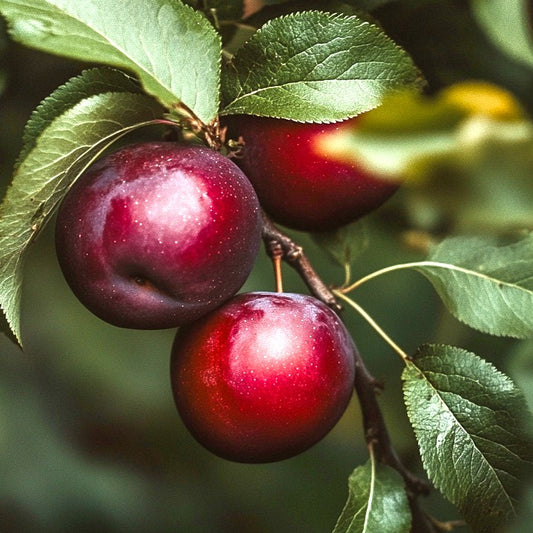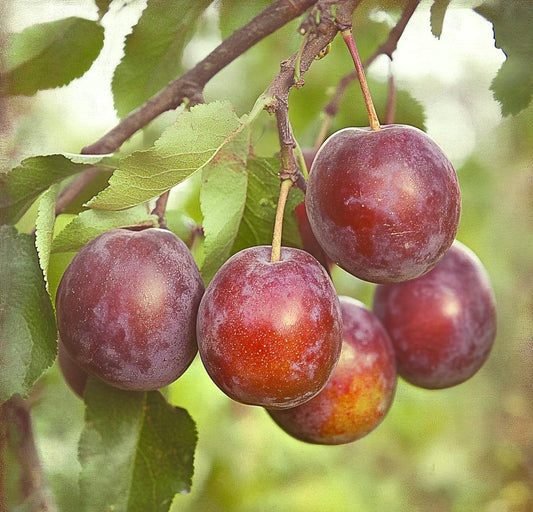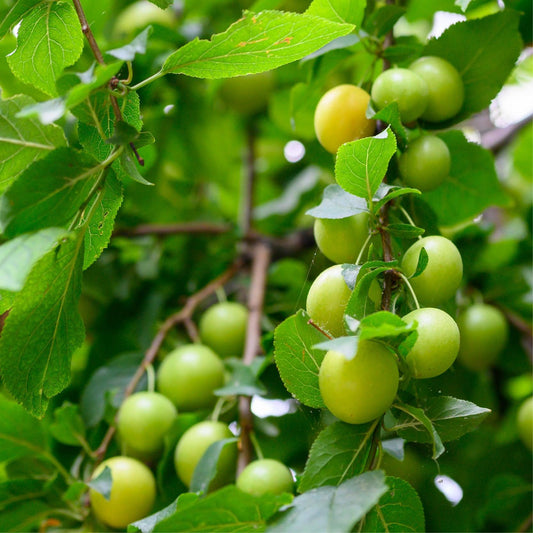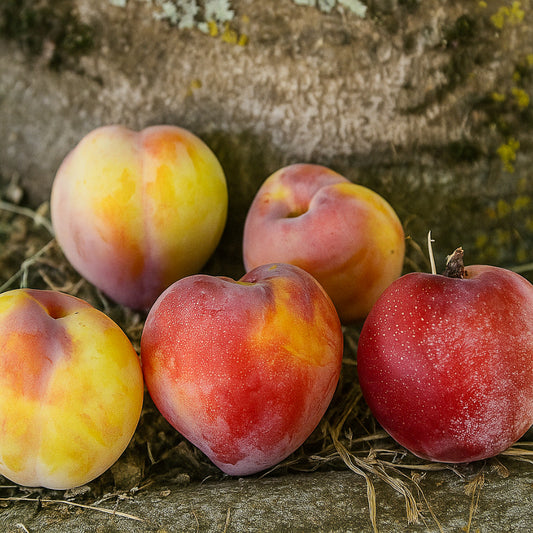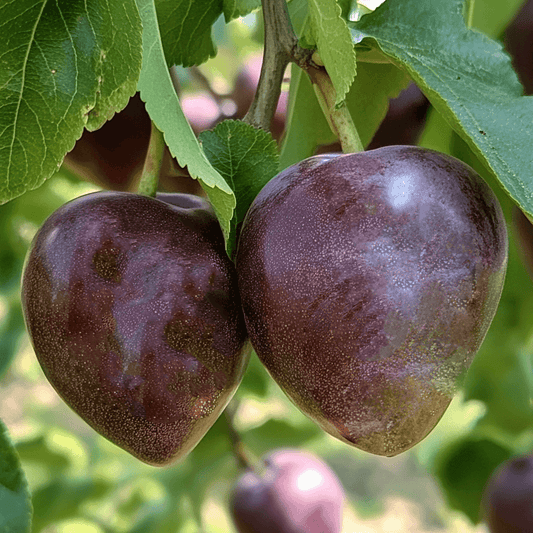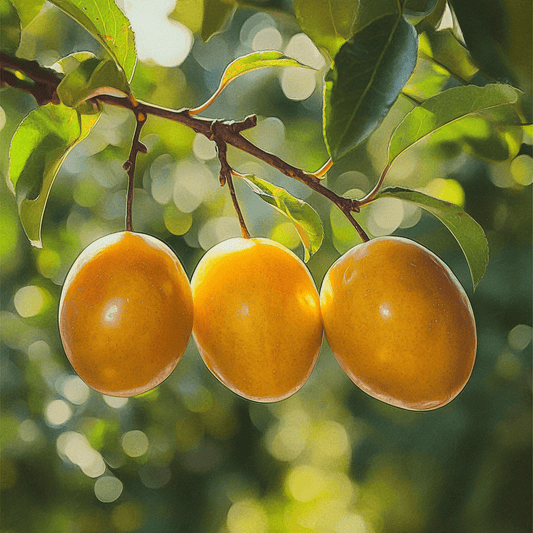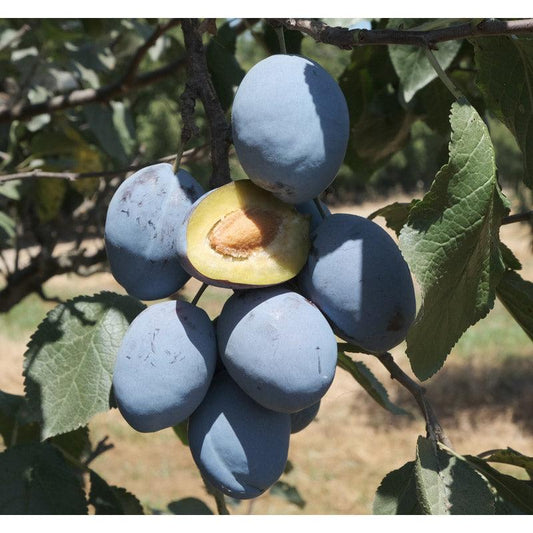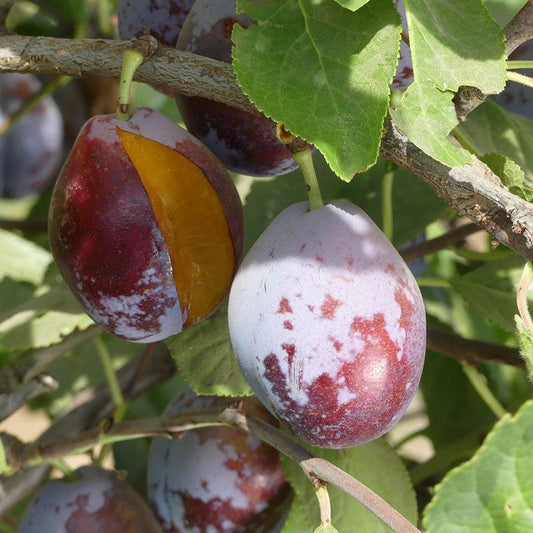Types of Plums: Everything You Need to Know About Plum Types and Plum Tree Species
Plum trees are among the most rewarding fruit trees you can grow, offering a beautiful spring bloom followed by sweet, juicy fruit in summer. With so many types of plums available, choosing the right one for your garden can seem overwhelming. Understanding the different types of plum trees, including Japanese, European, and American varieties, will help you pick the best tree for your climate, taste preferences, and desired use.
This guide explores popular plum tree species, compares major plum varieties, and helps with plum varieties identification—so you can select the perfect tree that will thrive and produce fruit year after year.

Main Types of Plum Trees
There are three primary plum types grown in home orchards: Japanese plums, European plums, and American plums. Each has unique characteristics in appearance, flavor, and growing habits. Let’s explore what makes each one special.
Japanese Plum Varieties (Prunus salicina)
Japanese plum trees are known for their large, juicy fruit, vibrant colors, and sweet flavor. These plums are often eaten fresh and ripen earlier than European types. They thrive in mild, warm climates (USDA Zones 6–10).
Japanese plums require cross pollination, so planting more than one Japanese variety helps ensure good fruit production.
Popular Japanese Plum Tree Varieties
-
Santa Rosa Plum Tree
- Perhaps the most famous Japanese plum variety, Santa Rosa produces medium-to-large fruit with deep red skin and amber flesh. It has a sweet flavor with a hint of tartness. Partially self-pollinating, it benefits from a nearby pollinator such as Methley.
-
Methley Plum Tree
- The Methley features purple-red skin and red, juicy flesh with a mild sweetness. Hardy and self-fertile, it’s perfect for gardeners in warmer regions. When comparing Methley plum vs Santa Rosa, Methley is more compact and fruits earlier, while Santa Rosa has larger, more complexly flavored fruit.
-
Burgundy Plum Tree
- Known for its striking black skin and rich, red flesh, the Burgundy plum has a smooth, mellow flavor. It’s self-pollinating and great for smaller gardens.
-
Shiro Plum
- A cheerful yellow plum with mild, sweet flavor and juicy flesh. Shiro trees are vigorous growers and reliable producers.
Japanese plums are perfect for those who love juicy fruit that’s best enjoyed right off the tree.

European Plum Varieties (Prunus domestica)
European plum trees thrive in cooler climates (Zones 4–8). Their fruit is denser, less juicy, and often used for drying or baking—this is where prune plums come from. These European varieties are prized for their rich, concentrated sweetness.
Common European Plum Tree Varieties
-
Stanley Plum Tree
- Cold-hardy and productive, Stanley produces purple-skinned plums with yellow flesh and a sugary flavor. It’s self-pollinating and ideal for making prunes.
-
Italian Plum Tree
- Deep purple skin, golden flesh, and a bold sweetness make the Italian a favorite for fresh eating, canning, or drying. When comparing Stanley plum vs Italian plum, both are self-fertile, but the Italian plum is slightly sweeter and ripens a bit earlier.
-
Damson Plum Tree
- A classic European plum variety, Damson plums are small, tart, and perfect for jams and preserves. These dark-skinned plums are hardy and disease-resistant.
-
Green Gage Plum Tree
- Known as “the dessert plum,” Green Gage produces small, greenish-yellow plums with incredibly sweet flavor. It’s one of the most prized varieties for gourmet cooking.
European and Japanese plums differ in both use and taste: Japanese plums are juicy and tangy, while European ones are sweet, firm, and perfect for preserving.
American Plums (Prunus americana)
American plums are native to North America and known for their adaptability and disease resistance. While the fruit is smaller, these trees handle cold winters and poor soils well. Their fruit, which often has red skin or yellow plums, is ideal for jams and jellies rather than fresh eating.

Choosing the Right Plum Tree for Your Garden
When selecting plum tree varieties, consider your region’s climate, soil, and available space. Japanese plums thrive in mild winters; European plum trees are better suited for cooler areas. If you’re in a dry or hot zone, look for drought-tolerant types like Santa Rosa or Methley.
Plant your trees in well-drained soil enriched with compost. Most Japanese plums require cross pollination, so pair compatible types—such as Methley and Santa Rosa—to boost fruit production.
For planting and care tips, visit the Planting and Growing Plum Trees Guide.
Maintaining Healthy Plum Trees
Proper pruning, watering, and pest control help your plum trees produce fruit year after year. Remove dead or diseased branches and shape trees for sunlight penetration. Learn best techniques from the Pruning and Maintenance of Plum Trees Guide.
Keep pests like aphids and diseases like brown rot in check with organic methods from the Pest and Disease Management Guide.
When harvest season arrives, use the Harvesting and Using Plums Guide and try making your own jam with this Organic Plum Jam Tutorial.
You can browse all types of plum trees in the Grow Organic Plum Tree Collection.
In Summary
Plum trees come in many forms—European and Japanese, yellow plums, red skin, or even black skin—each with distinct texture and sweetness. From the juicy Japanese plum variety like Santa Rosa to the rich European variety like Stanley, there’s a plum for every gardener and palate.
By learning about plum types and their unique traits, you can plant the perfect tree for your region and enjoy years of delicious fruit.


